Clerks 2 theme by Raycer
Download: Clerks2.p3t
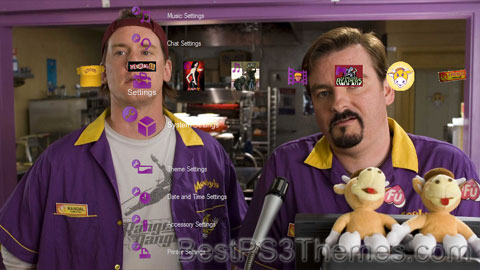
(2 backgrounds)
Redirect to:

The #1 spot for Playstation themes!
Stargate Atlantis theme by R2_JOE
Download: StargateAtlantis.p3t
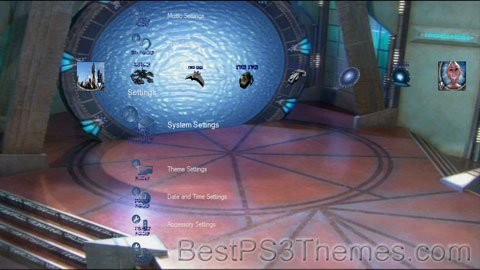
(11 backgrounds)
| Stargate Atlantis | |
|---|---|
 | |
| Genre | |
| Created by | |
| Based on | Stargate by Roland Emmerich Dean Devlin |
| Starring | |
| Theme music composer | Joel Goldsmith |
| Country of origin |
|
| Original language | English |
| No. of seasons | 5 |
| No. of episodes | 100 (list of episodes) |
| Production | |
| Executive producers | |
| Running time | 43 minutes |
| Production companies |
|
| Original release | |
| Network | Syfy |
| Release | July 16, 2004 – January 9, 2009 |
| Related | |
Stargate Atlantis (usually stylized in all caps and often abbreviated SGA) is an adventure and military science fiction television series and part of MGM's Stargate franchise. The show was created by Brad Wright and Robert C. Cooper as a spin-off series of Stargate SG-1, which was created by Wright and Jonathan Glassner and was itself based on the feature film Stargate (1994). All five seasons of Stargate Atlantis were broadcast by the Sci-Fi Channel in the United States and The Movie Network in Canada. The show premiered on July 16, 2004; its final episode aired on January 9, 2009. The series was filmed in and around Vancouver, British Columbia, Canada.
The story of Stargate Atlantis follows the events of Stargate SG-1's seventh season finale episode "Lost City" and eighth season premiere episode "New Order", in which the cast of that series discovered an Antarctic outpost created by the alien race known as the Ancients. In the pilot episode "Rising", Dr. Daniel Jackson discovers the location of Atlantis, the legendary city created by the Ancients, and Stargate Command sends an international team to investigate it.
The series was a ratings success for the Sci Fi Channel, and was particularly popular in Europe and Australia. Although it received little critical response, Stargate Atlantis was honored with numerous awards and award nominations in its five-season run. Merchandise for Stargate Atlantis includes games and toys, print media, and an original audio series. With the cancellation of Stargate Universe, the intended direct-to-DVD Stargate Atlantis movie, entitled Stargate: Extinction, was cancelled.[2][3]
Stargate Atlantis follows the present-day adventures of Major John Sheppard and his military team from Earth that, along with two dozen other teams, explore distant planets in the Pegasus Galaxy. They use an alien device known as a Stargate that was built millions of years ago by an advanced race of people known as the Ancients. The expedition is based in the Lost City of Atlantis on the planet "Lantea". The city was abandoned 10,000 years ago by the Ancients, who were forced to flee after losing a long war to a powerful enemy known as the Wraith. They were forced to submerge their city beneath Lantea's ocean, which, in the Stargate universe, is the source of the Greek myth of the Lost City of Atlantis.
Stargate: Atlantis episodes feature a self-contained story that also contributes to the larger storyline of the war against the Wraith and the Atlantis residents' search for the means to destroy their enemy. Each season has also featured a two-part episode, and some episodes that, while not technically two-parters, feature direct continuity with the story of the previous episode (for example, season 3 "Progeny" and "The Real World"). Each episode begins with a cold open, sometimes preceded by a recap of events relevant to the upcoming narrative. The opening credits feature an original theme by Joel Goldsmith. Though they were cut at the start of season 2, the full credits were recovered after the mid-season two-parter. They were again cut short in the 5th season.
| Season | Episodes | Originally aired | ||
|---|---|---|---|---|
| First aired | Last aired | |||
| 1 | 20 | July 16, 2004 | March 25, 2005 | |
| 2 | 20 | July 15, 2005 | March 10, 2006 | |
| 3 | 20 | July 14, 2006 | June 22, 2007 | |
| 4 | 20 | September 28, 2007 | March 7, 2008 | |
| 5 | 20 | July 11, 2008 | January 9, 2009 | |
Season one began airing in the United States on July 16, 2004. The Atlantis expedition, led by Dr. Elizabeth Weir, arrives at Atlantis, the city of the Ancients. The expedition quickly finds itself in a dire situation that forces them to seek new friends, the Athosians, but they also acquire a powerful new enemy: the Wraith. Due to the power requirements for reaching Lantea, they are unable to contact Earth. The expedition must survive in a new galaxy, while deciphering the Ancients' technology in order to find a way to destroy the Wraith and to acquire important new knowledge. Major Sheppard puts together a team consisting of himself, Dr. Rodney McKay, Lt. Ford and the Athosian leader Teyla Emmagan, who serve as Atlantis' first contact team. In one of their first missions, they make another enemy, the Genii, a human militaristic civilization with a 1950s level of technology. After several more revelations about the Wraith are made, the expedition prepares to evacuate. Just before they do, a military contingent from Earth arrives to help defend the city against the impending Wraith attack long enough for Earth's latest battleship to arrive. The season ends with a cliffhanger, while the city is still under siege by the Wraith.
Season two began airing in the United States on July 15, 2005, and it picked up where Season 1 ended. The Atlantis expedition successfully avoids being culled by the Wraith by making them believe Atlantis had been destroyed, and they recover semi-regular contact with Earth, thanks to the starship Daedalus and power from a new Zero Point Module (ZPM) recovered by SG-1. Sheppard is promoted to Lt. Colonel and as Lt. Ford, who went missing in action (MIA) at the end of the battle with the Wraith, is replaced by Ronon Dex a human freed from the Wraith. The central plot of the second season is the development of Dr. Beckett's retrovirus, which can, theoretically, turn a Wraith into a human. While an incomplete version makes a young Wraith girl lose all her humanity and almost turns Sheppard into an Iratus bug, a more developed version is tested on a living Wraith, "Michael", with mixed results. Michael's Wraith faction proposes an alliance with Atlantis, but they betray the team. The season closes again with a cliffhanger—the Wraith are heading for the rich feeding grounds of Earth.
Season three premiered in the United States on July 14, 2006, picking up where season 2 ended. Having stopped the Wraith from reaching Earth and having failed to develop a working Wraith retrovirus, the expedition faces its third year in the Pegasus galaxy with the Wraith still a threat and a new, powerful enemy bent on destroying the expedition and Atlantis: the Asurans, self-replicating nanobots, also known as Replicators. The situation becomes complicated when an experiment gone awry drains their only ZPM, leaving them without a power source for the city's shields. Soon thereafter, they find a lost Ancient vessel and unwillingly turn over the city of Atlantis to its crew. The SGC sends General O'Neill and Richard Woolsey to try to negotiate an agreement between Earth and the Ancients to allow the expedition to return to Atlantis. The Ancients are then subsequently killed by an invading Asuran force while O'Neill and Woolsey send off a distress call to Earth and go into hiding. The main members of the Atlantis expedition on Earth disobey their orders and go back to the city, rescue O'Neill and Woolsey, and repel the Asuran invasion. The season finale begins with Earth launching a first strike against the Asurans, who are building an armada to attack Earth. The Asurans counterattack by attacking Atlantis with a powerful beam weapon fired through a satellite housing a Stargate. As a last resort, the Atlantis team fires up the city's stardrive and escapes into space. The finale ends when the hyperdrive malfunctions, leaving the city flying through uncharted space with a day's worth of energy left in their sole ZPM and Dr. Weir critically injured.

Season four premiered in the USA on September 28, 2007,[4] and in the UK on October 9, 2007. The writers stated that season 4 would take the series in a new direction. As the 4th season begins where season 3 ended, the future seems bleak: Weir is incapacitated and the senior members of the expedition have suffered multiple injuries. With the city damaged, running out of power and drifting in space, cut off from Earth, the Atlantis expedition raids Asuras to obtain a ZPM and is able to travel to a nearby planet. Weir is captured by the Asurans and Colonel Samantha Carter joins as a regular and acts as the expedition leader.[5] She appears in the episode "Lifeline" after helping to find and land Atlantis on its new home planet; she is then ordered back to the SGC. In episode 3, under the IOA's orders, Carter returns to Atlantis as the new leader of the expedition after Atlantis lands. The season focuses on the main antagonists: the Asurans and the Wraith, as well as the pregnancy of Teyla Emmagan. The Asuran base code is reprogrammed by McKay, leading the nanobots to fulfill the purpose for which the Ancients created them: to wipe out the Wraith. Midway through the season, they are seemingly destroyed, and the remaining episodes concentrate mainly on Michael's efforts against both humans and the other Wraith.
In the fifth season, Richard Woolsey replaces Carter as the leader of the expedition. Teyla, who was held captive by Michael, gives birth to Torren John and escapes with her team, before they are able to cripple Michael. Eventually, he invades Atlantis with a commandeered Puddle Jumper to take Torren and destroy Atlantis but, thanks to the efforts of Sheppard, Teyla, and McKay, Michael is finally killed. The season also introduces a group of rogue Asgard, who unlike their Ida counterparts, actually experiment on humans to prolong their lives, and steal a device known as "The Attero device" to destroy the Wraith, though the side effect is that any Stargate activated after the device has been turned on will explode. The device is eventually destroyed. With the Attero device, Michael and the Hoffan drug, the Wraith have become weakened, and are no longer the power of the galaxy they once were; this gives the humans of the Pegasus galaxy freedom enough to establish a coalition. McKay falls in love with Keller, who eventually reciprocates his feelings, and they become romantically involved. In the season finale (also the series finale), "Enemy at the Gate", Todd the Wraith alerts Atlantis to the fact that an underling wraith possesses a Hive Ship powered by a ZPM. In the process of trying to retrieve the ZPM and disable the Hive, the Daedalus is crippled, and the hive suddenly jumps away without destroying the Daedalus. The Atlantis team discovers the reason for this was a communication sent from an alternate reality giving away Earth's location. The Hive disables both the battleships Sun Tzu and the Apollo en route to Earth. With a full set of ZPMs turned over by Todd, the expedition takes the city itself to defend Earth. The Hive ship is then destroyed in the subsequent battle and Atlantis lands in the Pacific Ocean near the Golden Gate Bridge in San Francisco.
| Character | Portrayed by | Seasons | ||||||||||
|---|---|---|---|---|---|---|---|---|---|---|---|---|
| 1 | 2 | 3 | 4 | 5 | ||||||||
| John Sheppard | Joe Flanigan | Main | ||||||||||
| Elizabeth Weir | Torri Higginson | Main | Recurring | Guest[a] | ||||||||
| Teyla Emmagan | Rachel Luttrell | Main | ||||||||||
| Aiden Ford | Rainbow Sun Francks | Main | Recurring[b] | Guest | ||||||||
| Rodney McKay | David Hewlett | Main | ||||||||||
| Ronon Dex | Jason Momoa | Main[c] | ||||||||||
| Carson Beckett | Paul McGillion | Recurring | Main[d] | Guest | Recurring | |||||||
| Samantha Carter | Amanda Tapping | Guest | Main | Guest | ||||||||
| Jennifer Keller | Jewel Staite | Guest | Recurring | Main | ||||||||
| Richard Woolsey | Robert Picardo | Recurring | Guest | Main | ||||||||
Guest starring: Richard Dean Anderson, Michael Shanks, Christopher Judge, Beau Bridges, Robert Davi, Kari Wuhrer, Danny Trejo, Mark Dacascos, Mitch Pileggi, Colm Meaney, Connor Trinneer and others.

When producers Brad Wright and Robert C. Cooper thought the original Stargate SG-1 series was going to be cancelled after season five, due to Showtime's announcement that they were canceling the show, they came up with the idea of making a new feature film. However, as the ratings on its new home at the Sci Fi Channel were quite good, the idea was pushed to season six and then to season seven. Wright had initially intended to set the new show in Antarctica under the ice. It would have replaced Stargate Command (SGC) as Earth's conduit to other worlds.[6]
Late in season seven of SG-1, talks began of a spin-off series and the producers were left with a serious dilemma, since the seventh season of Stargate SG-1 had been planned to lead up to the great discovery of the lost city of the Ancients, Atlantis. The Stargate SG-1 seventh season ended in a two-part episode, "Lost City", which was supposed to be a bridge between Stargate SG-1 and the new spin-off, either a show or a movie, and was not planned to run at the same time as Stargate SG-1. Wright and Cooper rewrote the script as the two-part season seven finale and moved the setting of the story. The city of Atlantis, originally planned to be on Earth under Antarctica in place of the SGC, was moved to the Pegasus Galaxy. This change not only addressed the problem of fans wondering why the SGC would not be coming to the aid of the Atlantis Expedition with each episode, but it also gave the producers a chance to start afresh with new ideas instead of having an identical copy of the original show.[7]
The series received the green light on November 17, 2003, started shooting in February 2004, and premiered on July 16, 2004. From the start, Wright and Cooper ruled out casting "star names", on the basis of the financial pressures they were already experiencing with "star names" on Stargate SG-1. The casting was made more complicated because Atlantis got the go-ahead in November and had to compete with other networks during pilot season.[7] Disaster geophysicist Mika McKinnon acted as a science consultant for the series starting in 2008, and served as a consultant through Stargate Atlantis and Stargate Universe.[8]

The character most difficult to cast was the then-called Dr. Ingram, an unexcitable scientist expert on the Stargate. As the first day of shooting drew nearer and they were unable to find the right actor, they came to realize they had brought in the wrong character. Longtime Stargate director Martin Wood and Brad Wright thought it should be Dr. Rodney McKay, who had already appeared in a guest role in three episodes of Stargate SG-1. Actor David Hewlett was contacted and arrived at the set the day after filming had started.[7] Dr. Ingram had already been written into the pilot episode of the show and so the same script was used and the character's name simply changed to McKay. Later scripts were written with Dr. McKay in mind.[9]
The creators found themselves with a problem with the character of Lt. Aiden Ford (Rainbow Sun Francks) in season two, a first season regular that the producers, and the actor himself, felt had not worked as intended and was highly underused as a result. Unwilling to write him out, the writers came up with an idea to make the character more important, but that downgraded him to recurring.[10] To replace him, they created Ronon Dex as a sidekick for Lt. Col.
Baki theme by Swerve121 Download: Baki.p3t Baki (Arabic: باقي) may refer to:
Rambo theme by ltmreal Download: Rambo_2.p3t Rambo may refer to:
Call of duty, Rambo; going in full force without hesitation.
Rambo theme by ltmreal Download: Rambo.p3t Rambo may refer to:
Call of duty, Rambo; going in full force without hesitation.
S-Cry-Ed theme by Goofy Download: S-Cry-Ed.p3t P3T Unpacker v0.12 This program unpacks Playstation 3 Theme files (.p3t) so that you can touch-up an existing theme to your likings or use a certain wallpaper from it (as many themes have multiple). But remember, if you use content from another theme and release it, be sure to give credit! Download for Windows: p3textractor.zip Instructions: Download p3textractor.zip from above. Extract the files to a folder with a program such as WinZip or WinRAR. Now there are multiple ways to extract the theme. The first way is to simply open the p3t file with p3textractor.exe. If you don’t know how to do this, right click the p3t file and select Open With. Alternatively, open the p3t file and it will ask you to select a program to open with. Click Browse and find p3textractor.exe from where you previously extracted it to. It will open CMD and extract the theme to extracted.[filename]. After that, all you need to do for any future p3t files is open them and it will extract. The second way is very simple. Just drag the p3t file to p3textractor.exe. It will open CMD and extract the theme to extracted.[filename]. For the third way, first put the p3t file you want to extract into the same folder as p3textractor.exe. Open CMD and browse to the folder with p3extractor.exe. Enter the following: Naruto theme by Kombo Download: Naruto_2.p3t
Naruto[a] is a Japanese manga series written and illustrated by Masashi Kishimoto. It tells the story of Naruto Uzumaki, a young ninja who seeks recognition from his peers and dreams of becoming the Hokage, the leader of his village. The story is told in two parts: the first is set in Naruto's pre-teen years (volumes 1–27), and the second in his teens (volumes 28–72). The series is based on two one-shot manga by Kishimoto: Karakuri (1995), which earned Kishimoto an honorable mention in Shueisha's monthly Hop Step Award the following year, and Naruto (1997).
Naruto was serialized in Shueisha's shōnen manga magazine Weekly Shōnen Jump from September 1999 to November 2014, with its chapters collected in 72 tankōbon volumes. Viz Media licensed the manga for North American production and serialized Naruto in their digital Weekly Shonen Jump magazine. Part I of the manga was adapted into an anime television series by Pierrot and Aniplex, which ran for 220 episodes from October 2002 to February 2007 on TV Tokyo. A second series, which adapts material from Part II of the manga, is titled Naruto: Shippuden and ran on TV Tokyo for 500 episodes from February 2007 to March 2017. Pierrot also developed 11 animated films and 12 original video animations (OVAs). The franchise includes light novels, video games, and trading cards developed by several companies. The story of Naruto continues in Boruto, where Naruto's son Boruto Uzumaki creates his own ninja way instead of following his father's.
Naruto is one of the best-selling manga series of all time, having 250 million copies in circulation worldwide in 47 countries and regions, with 153 million copies in Japan alone and remaining 97 million copies elsewhere. It has become one of Viz Media's best-selling manga series; their English translations of the volumes have appeared on USA Today and The New York Times bestseller list several times, and the seventh volume won a Quill Award in 2006. Reviewers praised the manga's character development, storylines, and action sequences, though some felt the latter slowed the story down. Critics noted that the manga, which has a coming-of-age theme, makes use of cultural references from Japanese mythology and Confucianism.
A powerful fox known as the Nine-Tails attacks Konoha, the hidden leaf village in the Land of Fire, one of the Five Great Shinobi Countries in the Ninja World. In response, the leader of Konoha and the Fourth Hokage, Minato Namikaze, at the cost of his life, seals the fox inside the body of his newborn son, Naruto Uzumaki, making him a host of the beast.[i] The Third Hokage returns from retirement to become the leader of Konoha again. Naruto is often scorned by Konoha's villagers for being the host of the Nine-Tails. Due to a decree by the Third Hokage forbidding any mention of these events, Naruto learns nothing about the Nine-Tails until 12 years later, when Mizuki, a renegade ninja, reveals the truth to him. Naruto defeats Mizuki in combat, earning the respect of his teacher, Iruka Umino.[ii]
Shortly afterward, Naruto becomes a ninja and joins with Sasuke Uchiha, against whom he often competes, and Sakura Haruno, on whom he has a crush, to form Team 7, under an experienced sensei, the elite ninja Kakashi Hatake. Like all the ninja teams from every village, Team 7 completes missions requested by the villagers, ranging from doing chores and being bodyguards to performing assassinations.
After several missions, including a major one in the Land of Waves, Kakashi allows Team 7 to take a ninja exam, enabling them to advance to a higher rank and take on more difficult missions, known as Chunin Exams. During the exams, Orochimaru, a wanted criminal, invades Konoha and kills the Third Hokage for revenge. Jiraiya, one of the three legendary ninjas, declines the title of Fifth Hokage and searches with Naruto for Tsunade whom he chooses to become Fifth Hokage instead.
During the search, it is revealed that Orochimaru wishes to train Sasuke because of his powerful genetic heritage, the Sharingan.[iii] After Sasuke attempts and fails to kill his older brother Itachi,[iv] who had showed up in Konoha to kidnap Naruto, he joins Orochimaru, hoping to gain from him the strength needed to kill Itachi. The story takes a turn when Sasuke leaves the village: Tsunade sends a group of ninja, including Naruto, to retrieve Sasuke, but Naruto is unable to persuade or force him to come back. Naruto and Sakura do not give up on Sasuke; Naruto leaves Konoha to receive training from Jiraiya to prepare himself for the next time he encounters Sasuke, while Sakura becomes Tsunade's apprentice.
Two and a half years later, Naruto returns from his training with Jiraiya. The Akatsuki starts kidnapping the hosts of the powerful Tailed Beasts. Team 7 and other Leaf ninja fight against them and search for their teammate Sasuke. The Akatsuki succeeds in capturing and extracting seven of the Tailed Beasts, killing all the hosts except Gaara, who is now the Kazekage. Meanwhile, Sasuke betrays Orochimaru and faces Itachi to take revenge. After Itachi dies in battle, Sasuke learns from the Akatsuki founder Tobi that Itachi had been ordered by Konoha's superiors to destroy his clan to prevent a coup; he accepted, on the condition that Sasuke would be spared. Devastated by this revelation, Sasuke joins the Akatsuki to destroy Konoha in revenge. As Konoha ninjas defeat several Akatsuki members, the Akatsuki figurehead leader, Nagato, kills Jiraiya and devastates Konoha, but Naruto defeats and redeems him, earning the village's respect and admiration.
With Nagato's death, Tobi, disguised as Madara Uchiha (one of Konoha's founding fathers), announces that he wants to capture all nine Tailed Beasts to cast an illusion powerful enough to control all humanity and achieve world peace. The leaders of the five ninja villages refuse to help him and instead join forces to confront his faction and allies. That decision results in a Fourth Shinobi World War between the combined armies of the Five Great Countries (known as the Allied Shinobi Forces) and Akatsuki's forces of zombie-like ninjas. The Five Kage try to keep Naruto, unaware of the war, in a secret island turtle near Kumogakure (Hidden Cloud Village), but Naruto finds out and escapes from the island with Killer Bee, the host of the Eight-Tails. At that time, Naruto—along with the help of Killer Bee—gains control of his Tailed Beast and the two of them head for the battlefield.
During the conflict, it is revealed that Tobi is Obito Uchiha, a former teammate of Kakashi's who was thought to be dead. The real Madara saved Obito's life, and they have since collaborated. As Sasuke learns the history of Konoha, including the circumstances that led to his clan's downfall, he decides to protect the village and rejoins Naruto and Sakura to thwart Madara and Obito's plans. However, Madara's body ends up possessed by Kaguya Otsutsuki, an ancient princess who intends to subdue all humanity. A reformed Obito sacrifices himself to help Team 7 stop her. Once Kaguya is sealed, Madara dies as well. Sasuke takes advantage of the situation and takes control of all the Tailed Beasts, as he reveals his goal of ending the current village system. Naruto confronts Sasuke to dissuade him from his plan, and after they almost kill each other in a final battle, Sasuke admits defeat and reforms. After the war, Kakashi becomes the Sixth Hokage and pardons Sasuke for his crimes. Years later, Kakashi steps down while Naruto marries Hinata Hyuga and becomes the Seventh Hokage, raising the next generation.
In 1995, Shueisha released Karakuri, a one-shot manga by Masashi Kishimoto that earned an honorable mention in the Hop Step Award in 1996. Kishimoto was unsatisfied with his subsequent drafts for a follow-up, and decided to work on another project.[2] The new project was originally going to feature Naruto as a chef, but this version never made it to print. Kishimoto originally wanted to make Naruto a child who could transform into a fox, so he created a one-shot of Naruto for the summer 1997 issue of Akamaru Jump based on the idea.[3][4] Despite the positive feedback it received in a readers' poll, Kishimoto was unhappy with the art and the story, so he rewrote it as a story about ninjas.[5]
The first eight chapters of Naruto were planned before it appeared in Weekly Shōnen Jump, and these chapters originally devoted many panels of intricate art to illustrating the Konoha village. By the time Naruto debuted, the background art was sparse, instead emphasizing the characters.[5] Though Kishimoto had concerns that chakra (the energy source used by the ninjas in Naruto) made the series too Japanese, he still believed it is an enjoyable read.[6] Kishimoto is a fan of Godzilla, and the tailed beasts mythology was introduced because Kishimoto wanted an excuse to draw monsters.[7] He has said that the central theme in Part I of Naruto is how people accept each other, citing Naruto's development across the series as an example.[8]
For Part II of the manga, Kishimoto tried to keep the panel layouts and the plot easy for the reader to follow, and avoid "overdo[ing] the typical manga-style".[9] He considers that his drawing style has changed from "the classic manga look to something a bit more realistic."[9] Because of wishing to end the arc involving Sasuke Uchiha's search for his brother, Itachi, in a single volume, Kishimoto decided that volume 43 should include more chapters than regular volumes. As a result, Kishimoto apologized to readers for this since volume 43 was more expensive than regular volumes.[10]
When he created Naruto, Kishimoto looked to other shōnen manga as influences for his work and tried to make his characters unique, while basing the story on Japanese culture.[11] The separation of the characters into different teams was intended to give each group a particular flavor. Kishimoto wanted each member to have a high level of aptitude in one skill and be talentless in another.[12] He found it difficult to write about romance, but emphasized it more in Part II of the manga, beginning with volume 28.[8] He introduced villains into the story to have them act as a counterpoint to his characters' moral values and clearly illustrate their differences.[13] As a result of how the younger characters were significantly weaker than the villains, Kishimoto made the ellipsis in order to have them age and become stronger during this time.[14]
Kishimoto made use of the Chinese zodiac tradition, which had a long-standing presence in Japan; the zodiac hand signs originate from this.[6] When Kishimoto was creating the primary setting of the Naruto manga, he concentrated initially on the designs for the village of Konoha. The idea of the setting came to him "pretty spontaneously without much thought", but admits that the scenery became based on his home in the Japanese prefecture of Okayama. Since the storyline does not specify when it is set, he was able to include modern elements in the series such as convenience stores.[15] He considered including automobiles, planes and simple computers, but excluded projectile weapons and vehicles from the plot.[15][16]
Masashi Kishimoto's home was close to Hiroshima where his grandfather lived. He would often tell his grandson stories of war and how it was related to grudges. In retrospect, Kishimoto commented he could not criticize anyone as a result of the war based on it was built.[clarification needed] Upon further researching, Kishimoto decided to create world war story arc for the manga's finale. However, unlike the stories he heard from his grandfather, Kishimoto wanted to give the war covered in Naruto a more hopeful feeling.[17] Nagato's arc paved the way for the ending of Naruto to occur. Nagato stood out as a villain due to suffering war and killing Naruto's mentor Jiraiya. Understanding the fears of war, Naruto's characterization was made more complex for him to experience the Fourth Great Shinobi War. These events end with Naruto forgiving Sasuke as he had forgiven Nagato in the final battle.[14]
Due to unknown issues, the series' finale was delayed. Once volume 66 was released, Kishimoto commented he reached a moment from the narrative involving something he always wanted to draw.[18] When serialization began, Kishimoto decided the ending would feature a fight between two characters: Naruto and Sasuke. However, the writer felt the two were not equals as the former was not a victim of war like the latter whose family was killed to stop a possible civil war.[19]
Kishimoto chose Hinata Hyuga as Naruto's romantic partner from the early stages of the manga, since Hinata had always respected and admired Naruto even before the series' beginning, and Kishimoto felt this meant the two of them could build a relationship.[20] When Hinata first appeared, Kishimoto thought of expanding romantic plotlines.[21][22] but decided to leave Naruto's maturation through romance as an idea for the film 2014 The Last: Naruto the Movie where he worked alongside screenwriter Maruo Kyozuka, a writer more skilled at the theme of romance.[23] Similarly, the title character's relationship with his first son, Boruto, was explored furthermore in the 2015 film Boruto: Naruto the Movie to end Naruto's growth as the character had become an adult, but it was briefly shown in the manga's finale.[24]
Written and illustrated by Masashi Kishimoto, Naruto was serialized for a 15-year run in Shueisha's magazine, Weekly Shōnen Jump from September 21, 1999,[25][26] to November 10, 2014.[27][28] Shueisha collected its chapters in 72 tankōbon volumes—27 for Part I, and the rest for Part II; they were released between March 3, 2000,[29] and February 4, 2015.[30] The first 238 chapters are Part I and constitute the first section of the Naruto storyline. Chapters 239 to 244 include a gaiden (side-story) focusing on Kakashi Hatake's background. The remaining chapters (245 to 700) belong to Part II, which continues the story after a 2+1⁄2-year gap in the internal timeline. Shueisha have also released several ani-manga tankōbon, each based on one of the Naruto movies,[31] and has released the series in Japanese for cell-phone download on their website Shueisha Manga Capsule.[32] A miniseries titled Naruto: The Seventh Hokage and the Scarlet Spring,[b] centered on the main characters' children, began serialization in the Japanese and English editions of Weekly Shōnen Jump on April 27, 2015, and ended after ten chapters on July 6 of the same year.[33][34]
Naruto was scanlated (translated by fans) and available online before a licensed version was released in North America;[35] the rights were acquired by Viz Media, who began serializing Naruto in their anthology comic magazine Shonen Jump, starting with the January 2003 issue.[36] The schedule was accelerated at the end of 2007 to catch up with the Japanese version,[37] and again in early 2009, with 11 volumes (from 34 to 44) appearing in three months, after which it returned to a quarterly schedule.[38] All 27 volumes of Part I were released in a boxed set on November 13, 2007.[39] On May 3, 2011, Viz started selling the manga in an omnibus format with each book containing three volumes.[40]
The franchise has been licensed in 90 countries, and the manga serialized in 35 countries.[41][42] Madman Entertainment began publishing Naruto volumes in Australia and New Zealand in March 2008 after reaching a distribution deal with Viz Media.[43] Carlsen Comics has licensed the series, through its regional divisions, and released the series in German and Danish.[44] The series is also licensed for regional language releases in French and Dutch by Kana,[45] in Polish by Japonica Polonica Fantastica,[46] in Russian by Comix-ART,[47] in Finnish by Sangatsu Manga,[48] in Swedish by Bonnier Carlsen,[49] and Italian by Panini Comics.[50]
A spin-off comedy manga by Kenji Taira, titled Naruto SD: Rock Lee no Seishun Full-Power Ninden,[c] focuses on the character Rock Lee, a character who aspires to be strong as a ninja but has no magical jutsu abilities. It ran in Shueisha's Saikyō Jump magazine from December 3, 2010, to July 4, 2014,[51][52] and was made into an anime series, produced by Studio Pierrot, and premiering on TV Tokyo on April 3, 2012.[53] Crunchyroll simulcasted the series' premiere on their website and streamed the following episodes.[54] Taira also wrote Uchiha Sasuke no Sharingan Den,[d] which released on October 3, 2014, which runs in the same magazine and features Sasuke.[55]
A monthly sequel series titled Boruto: Naruto Next Generations began in the Japanese and English editions of Weekly Shōnen Jump in early 2016, illustrated by Mikio Ikemoto and written by Ukyō Kodachi, with supervision by Kishimoto. Ikemoto was Kishimoto's chief assistant during the run of the original Naruto series, and Kodachi was his writing partner for the Boruto: Naruto the Movie film screenplay. The monthly series was preceded by a one-shot, titled Naruto: The Path Lit by the Full Moon (NARUTO-ナルト-外伝 ~満ちた月が照らす道~, Naruto Gaiden ~Michita Tsuki ga Terasu Michi~), written and illustrated by Kishimoto, and published on April 25 of that same year.[56][57][58] The staff from Shueisha asked Kishimoto if he would write a sequel to Naruto. However, Kishimoto refused the offer and offered his former assistant Mikio Ikemoto and writer Ukyō Kodachi write Boruto: Naruto Next Generations as the sequel to Naruto.[59]
Another one-shot chapter by Kishimoto, titled Naruto: The Whorl Within the Spiral (NARUTO-ナルト-外伝 ~渦の中のつむじ風~, Naruto Gaiden ~Uzu no Naka no Tsumujikaze~), centered on Naruto's father, Minato Namikaze, was published in Weekly Shōnen Jump on July 18, 2023.[60][61]
The first Naruto anime television series, directed by Hayato Date and produced by Pierrot and Aniplex, premiered on TV Tokyo in Japan on October 3, 2002, and concluded on February 8, 2007, after 220 episodes.[62][63] The first 135 episodes were adapted from Part I of the manga; the remaining 85 episodes are original and use plot elements that are not in the manga.[64] Tetsuya Nishio was the character designer for Naruto when the manga was adapted into an anime; Kishimoto had requested that Nishio be given this role.[65][66]
The second anime television series, titled Naruto: Shippuden[e], was also produced by Pierrot and directed by Hayato Date, and serves as a direct sequel to the first Naruto anime series; it corresponds to Part II of the manga.[67] It debuted on Japanese TV on February 15, 2007, on TV Tokyo, and concluded on March 23, 2017.[68][69]
A series of four "brand-new" episodes, to commemorate the original anime's 20th anniversary, were originally scheduled to premiere on September 3, 2023;[70] however, in August of that same year, it was announced that the episodes would be postponed to a later date.[71]
The series was adapted into 11 theatrical films and 12 original video animations (OVAs). The first three films correspond to the first series, and the remaining eight correspond to the second. In July 2015, Lionsgate announced the development of a live-action film with Avi Arad through his production company Arad Productions.[72] The film will be directed by Michael Gracey. On December 17, 2016, Kishimoto announced that he has been asked to co-develop.[73] On November 27, 2023, it was announced that Tasha Huo will work on the script for the film.[74]
On February 23, 2024, Gracey had exited the project, and Destin Daniel Cretton had been hired to direct and co-write the film. Cretton received his blessings from Kishimoto, after a visit in Tokyo, with Kishimoto stating that when he heard that Cretton would be directing, he thought that he was the perfect choice.[75]
Twenty-six Naruto light novels, the first nine written by Masatoshi Kusakabe, have been published in Japan.[76] Of these, the first two have been released in English in North America. The first adapted novel, Naruto: Innocent Heart, Demonic Blood (2002), retells a Team 7 mission in which they encounter the assassins Zabuza and Haku;[77][78] the second, Naruto: Mission: Protect the Waterfall Village! (2003) was based on the second OVA of the anime.[79][80] Viz has also published 16 chapter books written by Tracey West with illustrations from the manga. Unlike the series, these books were aimed at children ages seven to ten.[81] Thirteen original novels have appeared in Japan;[76] eleven of these are part of a series, and the other two are independent novels unconnected to the series. The first independent novel, titled Naruto: Tales of a Gutsy Ninja (2009), is presented as an in-universe novel written by Naruto's master Jiraiya. It follows the adventures of a fictional shinobi named Naruto Musasabi, who served as Naruto's namesake.[82] The other independent novel, Naruto Jinraiden: The Day the Wolf Howled (2012), is set shortly after Sasuke's fight with Itachi.[83]
Itachi Shinden, which consists of two novels, and Sasuke Shinden, a single novel, both appeared in 2015, and both were adapted into anime arcs in Naruto: Shippuden in 2016, titled Naruto Shippūden: Itachi Shinden-hen: Hikari to Yami and Book of Sunrise respectively.[84][85] Hiden is a series of six light novels published in 2015 that explores the stories of various characters after the ending of the manga.[86]
Naruto video games have been released on various consoles by Nintendo, Sony, and Microsoft. The majority of them are fighting games in which the player directly controls one of the characters from Naruto. The player pits their character against another character controlled by the game's
Aliens theme by asplashofcolor Download: Aliens.p3t Redirect to:Hajime No Ippo
Baki
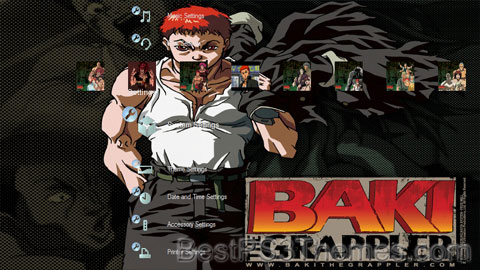
(2 backgrounds)
Places[edit]
People[edit]
In fiction[edit]
Other uses[edit]
See also[edit]
Rambo #2

(5 backgrounds)
Arts, entertainment, and media[edit]
Fictional characters[edit]
Films[edit]
Television[edit]
Literature[edit]
Video games[edit]
Music[edit]
People[edit]
Pseudonym[edit]
Surname[edit]
Places[edit]
Other uses[edit]
See also[edit]
Rambo
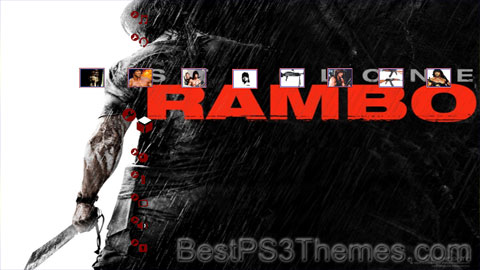
(6 backgrounds)
Arts, entertainment, and media[edit]
Fictional characters[edit]
Films[edit]
Television[edit]
Literature[edit]
Video games[edit]
Music[edit]
People[edit]
Pseudonym[edit]
Surname[edit]
Places[edit]
Other uses[edit]
See also[edit]
Alien Vs Predator
S-Cry-Ed
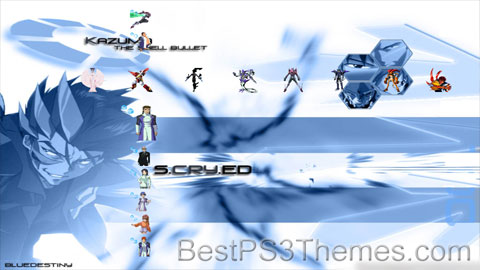
(3 backgrounds)
Copyright (c) 2007. Anoop Menon
p3textractor filename.p3t [destination path]Replace filename with the name of the p3t file, and replace [destination path] with the name of the folder you want the files to be extracted to. A destination path is not required. By default it will extract to extracted.filename.Naruto #2
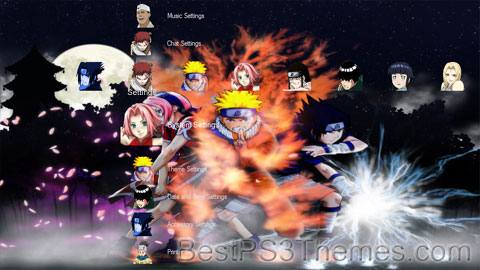
(1 background)
Naruto 
NARUTO Genre Manga Written by Masashi Kishimoto Published by Shueisha English publisher Imprint Jump Comics Magazine Weekly Shōnen Jump English magazine Demographic Shōnen Original run September 21, 1999 – November 10, 2014 Volumes 72 Anime television series
Media franchise
Plot[edit]
Part I[edit]
Part II[edit]
Production[edit]
Development[edit]
Characters[edit]
Setting[edit]
Conclusion[edit]
Media[edit]
Manga[edit]
Spin-offs[edit]
Anime[edit]
Films[edit]
Novels[edit]
Merchandise[edit]
Video games[edit]
Aliens

(5 backgrounds)
[[link]]s). However, do not replace these redirected links with a simpler link unless the page is updated for another reason (see WP:NOTBROKEN).